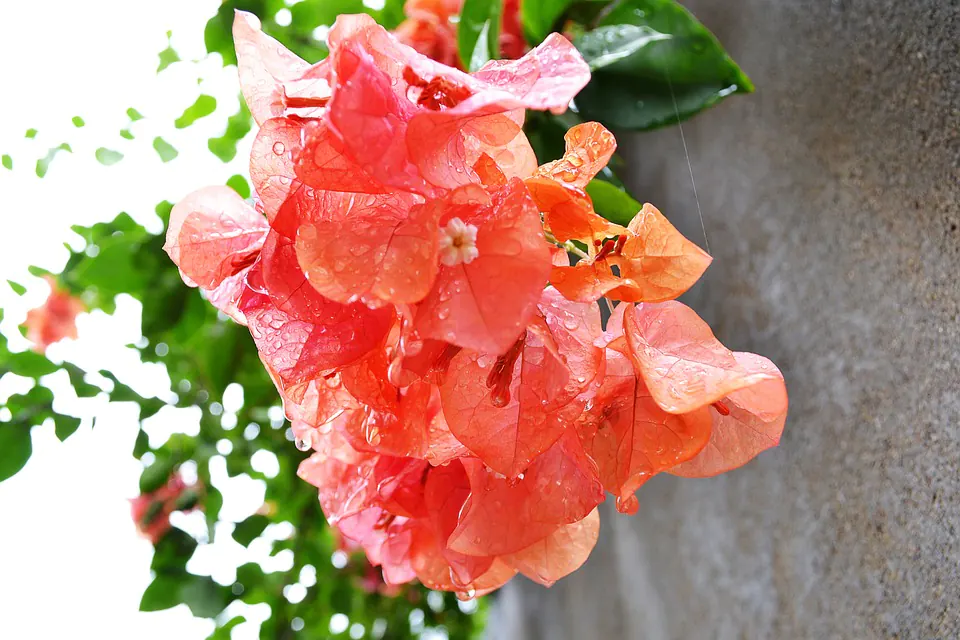Can You Revive a Bougainvillea?
Bougainvillea is a beautiful flowering evergreen shrub that can be trained as a beautiful bonsai, with its colorful flowers ranging from warm oranges, pinks, purples, reds to a simple white. While Bougainvillea are relatively hardy trees and not very difficult to care for, harsh winters, frost, and overwatering may cause them to lose their leaves and appear dead.
No bonsai enthusiast wants to lose a tree, any tree, so what can you do to revive your Bougainvillea and bring it back from the brink? Luckily for you, there are a few simple things you can do to rescue your bonsai from death. In this article, we will be covering how to tell if your Bougainvillea is dead and what you can do to save it.
Is Your Bougainvillea Dead?
If your Bougainvillea loses all its leaves, this is a sign that it might be dying. If the conditions are right, Bougainvillea are evergreen shrubs and will usually maintain most of their leaves throughout the year. While some leaf loss is normal, if your Bougainvillea starts to lose a lot of its leaves suddenly, you should start checking the conditions of the tree and start acting immediately to help it recover.
However, just because your Bougainvillea lost a lot or all of its leaves, that does not mean it is dead. You may still be able to revive it with the proper care. That’s why you should never toss out any bonsai before you are 100% sure it is dead. An easy way to check if your tree is still alive is by scratching a piece of the bark off. If the tree is still green underneath, that means there is still hope, and the tree is still alive.
Reasons a Bougainvillea Bonsai May Die
Most of the reasons for leaf loss in Bougainvillea is stress on the plant. There are a few reasons that your Bougainvillea might be stressed and dying. Let’s look at a few of the most common reasons now.
Overwatering
Overwatering is one of the main reasons that bougainvillea bonsai die. Bougainvillea doesn’t need as much water as one would think. It is best to water them thoroughly and then allow the soil to dry completely before watering again. If you suspect you might be watering your bonsai too often, check the soil with your finger, the first few inches should be dry before watering again.
If you know that it is not an overwatering issue, check the pot to make sure it is draining correctly. If there are issues that cause the pot not to drain, water could stagnate in the pot, and the roots could start rotting.
Too Little Sunlight
Bougainvilleas love the sunlight and do best when they are in a spot where they get full sun during the day. If a Bougainvillea bonsai does not receive enough sunlight, the leaves may start to droop and fall off. If you’ve ruled out any watering issues, check that your bonsai gets enough sunlight. Remember that additional structures that come up may affect how much sun your bonsai gets, so it’s worth checking.
Pests
If you’ve already excluded watering and sunlight issues from your list, it may be time to inspect your tree for pests. Aphids can be a big problem, and these tiny pests can often go unnoticed for a while, causing a lot of damage to your tree. Inspect your tree very carefully, and make sure to also check underneath the leaves.
Any sign of an insect might indicate an infestation. You can try removing the pests by hand, but it is more effective to rinse them off. You can use a pesticide, or if you prefer a more natural approach, you can use a mixture of water, dish soap, and neem oil. Although neem oil is more effective, you can substitute it with vegetable oil if you don’t have neem oil on hand.
Extensive Cold Weather and Frost
Bougainvillea occur naturally in a warm climate. As such extended periods of extreme cold can cause your Bougainvillea a lot of stress which can cause it to lose leaves, and its health will suffer. If you live in an area known for winter temperatures below 50 degrees Fahrenheit, you should consider moving your Bougainvillea indoors to a warm spot where it will still get enough sunlight. If you don’t have a spot in sunlight, you can recreate it with plant-growing lights.
How to Revive a Bougainvillea Bonsai?
If it’s not too far gone, you might still have a chance to revive your bougainvillea bonsai. Now that we’ve covered a few reasons why your bonsai might be dead let’s look at how you can save it.
Prune Away Dead Sections
Using clean, sharp pruning shears, start removing any dead sections. This includes dead foliage, flowers, or stems. You can also trim back any longer shoots or branches closer to the trunk or main leader of your bonsai.
Check That the Cambium Is Still Green
In the areas where you’ve cut back the branches, check if the cambium, the layer beneath the bark, is still green. If it’s too difficult to spot on the branches, you can also scrape away a small layer from the main trunk to see if the cambium is still green. If the cambium is still green, there is still hope as it means the tree is still alive.
Remove from the Pot and Prune the Roots
Next, remove the bonsai from the pot. Using a root rake or chopsticks, remove all the soil from the root ball. Comb out your roots in a radial pattern and inspect them carefully. Remove any dead or dying roots. Healthy roots should be light in color. Dark brown or black roots are dead and can be removed. Once done, cover the roots in a damp cloth or submerge them in some water while you prepare the pot.
Prepare the New Bonsai Pot
Get the new container ready. For best success at recovering your tree, use a bigger container than the one it was in. Cover the drainage holes with mesh and fill halfway with a good draining loamy soil. A good mixture to use is equal parts potting soil, perlite, and sphagnum moss.
Repot Your Bougainvillea Bonsai
Place your bonsai in the container while trying to keep the roots in a radial pattern. This allows for equal distribution of nutrients and space for the roots to grow. Add more soil to cover all the roots and use a chopstick to work the soil into all the areas of the roots. Add more soil as needed to fill the container. Use wire to secure your Bougainvillea in the container to limit any movement of the tree, which could damage any new root growth.
Water Your Bonsai and Give it Some Time
Water your bonsai thoroughly and place it in a location where it will get a lot of sunlight. Now, you just need to wait for the tree to recover. Don’t be surprised if it takes until the next growing season before you start seeing any improvement, as sometimes it can take more time than expected.
Tips When Attempting to Revive Your Bonsai
Here are a few tips to bear in mind when trying to revive your Bougainvillea bonsai:
- Do not overwater your Bougainvillea, even during the recovery period. Bougainvillea require that the soil dry out first before watering again.
- Do not fertilize your Bougainvillea shortly after repotting. Wait until the next growing season before fertilizing.
- Wear gloves while pruning your Bougainvillea as they can have thorns, and sometimes getting scratches by these thorns can cause a slight allergic skin reaction.
- Make sure to keep your bonsai in the ideal location as this will increase its chances of survival. Bougainvillea needs a lot of sunlight and needs to be protected from temperatures below 50 degrees.

Final Thoughts
While Bougainvilleas are relatively easy to keep alive, they can sometimes die. The most common reasons a Bougainvillea can die are overwatering too little sunlight and pests. You can revive your Bougainvillea and soon have it back to its former glory by following our steps above. Remember that the best way to keep your bonsai thriving is by making sure their individual needs are being met, and with Bougainvillea, this means lots of sun and a nice warm spot.







